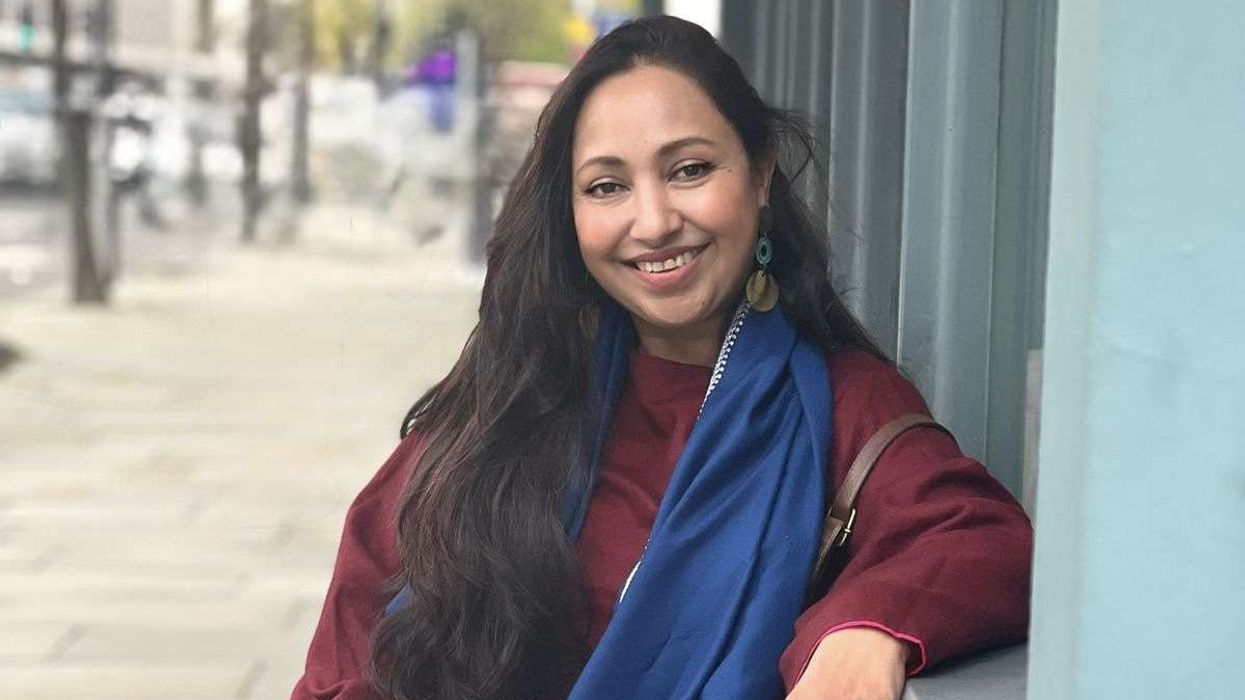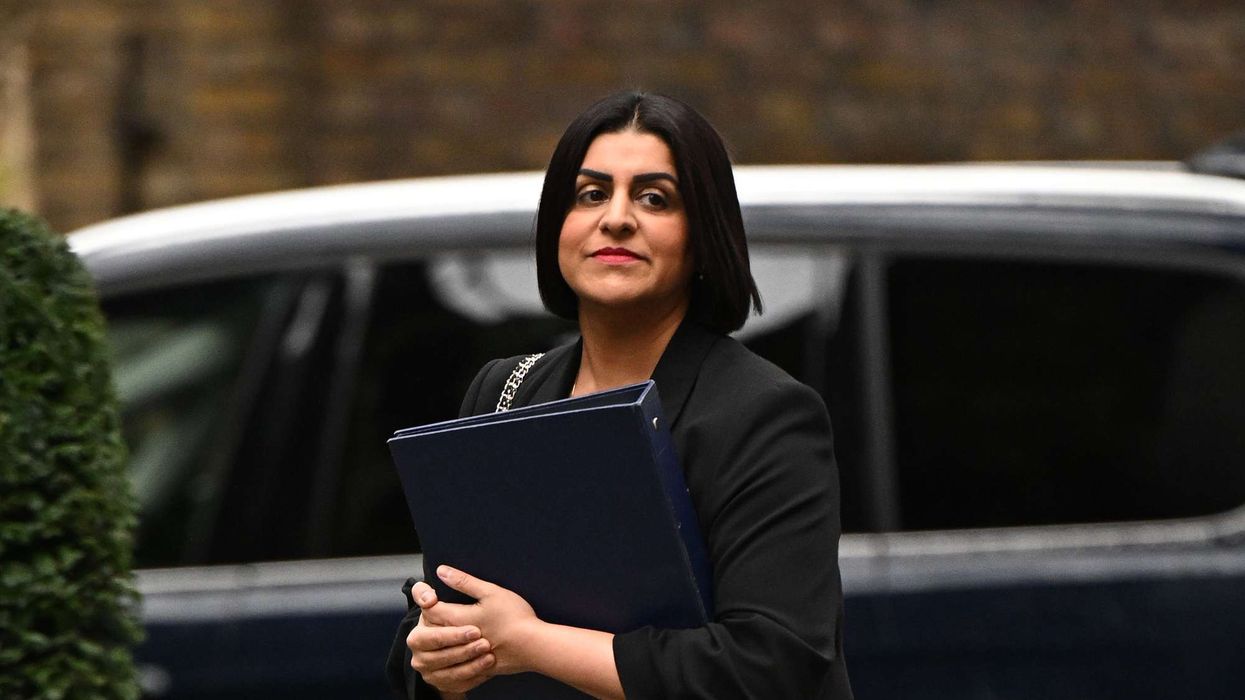THE SOUTH INDIAN STAR ON HER NEW FILM AND DOING MORE MESSAGE-DRIVEN ROLES
by ASJAD NAZIR
RECENTLY released film Ponmagal Vandhal became the first major Tamil movie to have a worldwide premiere on streaming site Amazon Prime and revolves around an honest lawyer’s attempts to redeem a wrongfully convicted woman.
The gripping legal drama stars acclaimed actress Jyotika as the crusading lawyer and adds to power-packed roles she has played across multiple languages during her glittering cinematic career.
Eastern Eye caught up with massively popular South Indian star Jyotika to discuss her amazing career, new film, woman empowerment and her plans for when lockdown is over.
How would you look back on your amazing career?
It has been wonderful. Right from the time I started my journey to the present day, I’d say a lot has changed. I have become more responsible. I have kids and want them to be proud of me. Having learned a lot, I feel that there is so much unsaid that needs to be spoken about. I would like to be a voice and think women still need that support. I have been blessed and lucky to get such scripts. When I get them, I leave no stone unturned to get them out there.
You must be happy more woman centric roles are being written…
There was a time when there weren’t many women-centric films in the South. The success of films such as Ponmagal Vandhal with strong female leads and powerful messages, which goes beyond entertaining the masses, shows how well they’ve been appreciated. This is a sign of changing times, where audiences are now hungry for good and intriguing content. With every role I choose, I try to explore something different, as well as do something meaningful that shares an important message with the viewers.
Which of your roles gave you the greatest joy?
There is one called Mozhi, where I played a deaf and dumb girl, which was one of my first hard core performance orientated films without a hero and it really went well with audiences. Unfortunately, it was my last film before I quit and got married. A lot of respect came from that film. So that is very special to me. The other special role is Ponmagal Vandhal because I think this is the maximum effort I have put into a role. I felt it was more powerful than playing a cop or a teacher. This role of a lawyer is extremely powerful.
You made a successful comeback after starting a family. What has been the most challenging role?
The character of Venba I play in Ponmagal Vandhal is the most challenging I have ever played in my career. Every actor looks for roles that take their acting to greater heights, and my character Venba has brought out the best in me. I’m glad to have led a film that portrays a strong female character, who will go to great lengths to seek justice.
Tell us about the film and role...
In Ponmagal Vandhal, I play a lawyer in the sessions court in Ooty. The film narrates the tale of Venba, who is fighting to deliver justice to an innocent girl who has been falsely accused in a case. I want to play real-life characters (like this), which audiences can easily identify with.
What did you most like about Ponmagal Vandhal?
It was definitely the message; it is something that needs to be said. There have been so many cases of children being abducted and women being abused, and raped for years. It’s something that’s taking place even during the pandemic. It was something that disturbed me emotionally, and I would talk about it at home. This social message needs to be highlighted, and it came out as a film.
How did you find the subject for the film?
This young boy (JJ Fredrick), a new director, walked in with a script, and I felt it needed to be made since cinema has the power to impact lives. We have dialogues in the film that appropriately question the law and asks why there is a delay towards delivering justice. For years, we’ve seen very few films about lawyers and only get to see men in those roles. Before this, we’d never (really) had a courtroom drama with a female lawyer as the lead. It’s great to have led the change and been part of such a great story and film.
Your favourite moment in the film...
It’s the scene we did in the church with Bhagyaraj sir. That is one of my favourite scenes. There is a different emotion involved there, where he tells me we have lost the case and let’s give up. If you see, there is a silent shot when he walks out and an emotion of anger plus tears rolling down at the same time. I also like the climax of the movie where I talk about what rape actually is to a girl and it cannot happen to a child. These are my favourite parts of the film.
Who are you hoping connects with the film?
I hope young audiences everywhere connect with the film and understand that one should not shy away from fighting for a cause they truly believe in. We want to present our viewers a very strong message about the judicial system, sexual abuse and the trauma that survivors go through. With Amazon Prime Video’s extensive reach, we aim to take this message to Tamil film lovers, as well as global audiences worldwide.
Did you learn anything new while acting in the film?
My Tamil is not very fluent. Working with a legendary cast, I was nervous about my courtroom scenes that were primarily long monologues in Tamil. But with the help of JJ Fredrick, my director, I had read up a lot, which helped in delivering the scenes well.
What inspires you?
Honest stories inspire me. It makes me want to spread the message of the powerful things we are capable of. With a film like Ponmagal Vandhal, I simply ensure that women are portrayed right. I want all the women who watch my work to feel dignified. I believe that quest has led me to this point.
Do you have a dream role?
I want to work in projects that showcase women in a different light. If I am going to leave my kids alone and go out to work, I must see to it that I am adding some serious value to a film and making a difference. If the film demands that I just dance to songs, I wouldn’t trade it for time with my children.
What’s the plan after lockdown is over?
We live in a joint family and each day has been like a festival here. I hope when things get normal and we are back to our jobs, and kids are back to their school, we could still manage to keep the festivities alive.
Why should we watch your latest film on Amazon Prime?
The film is a gripping legal drama that will take you on a roller-coaster ride of emotions and will leave you with something to think about.
Ponmagal Vandhal is available now on Amazon Prime











